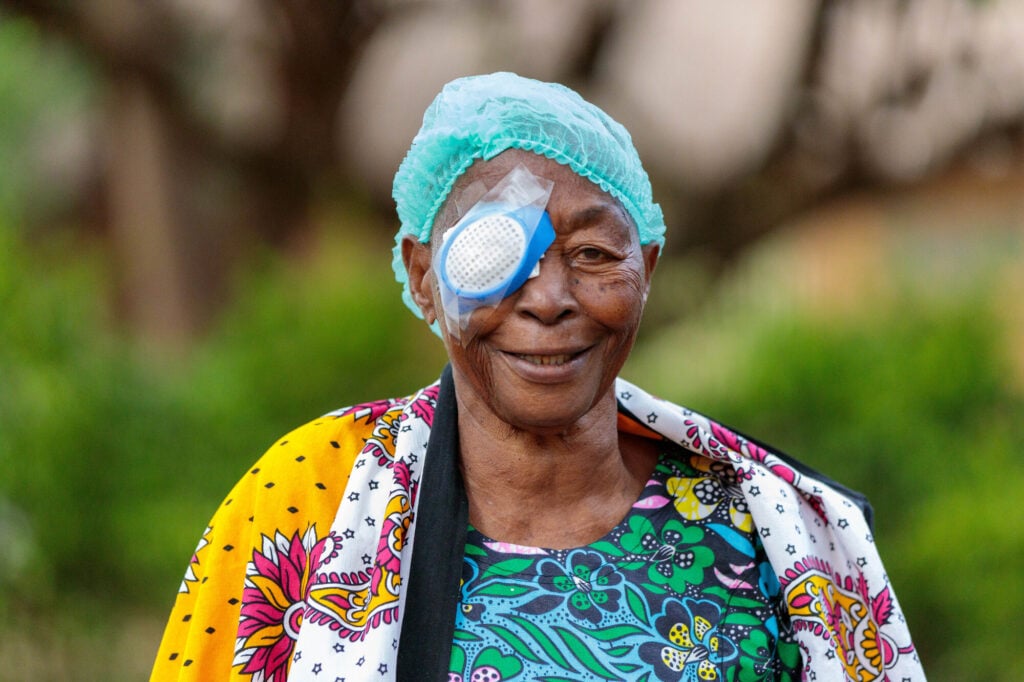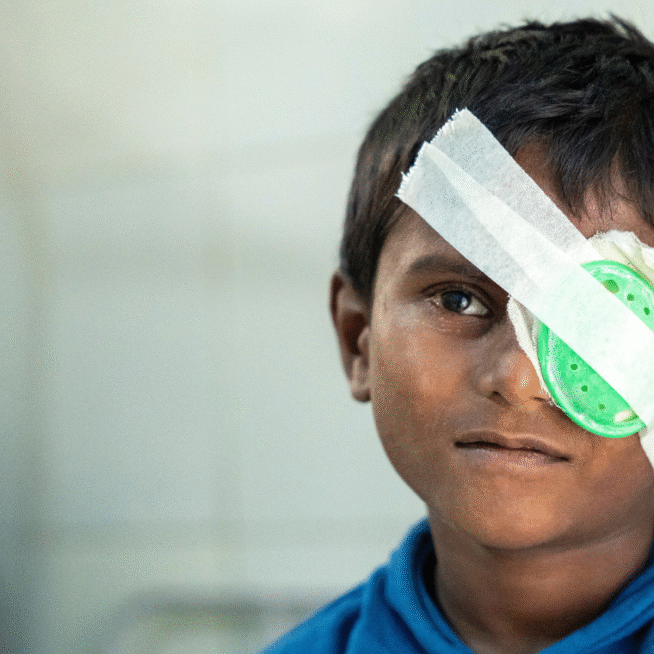Blindness affects over 43 million people worldwide, but what many don’t realise is that 4 out of 5 people who are blind or visually impaired don’t need to be. In fact, most blindness is avoidable – either preventable or treatable with the right care.
5 common myths about avoidable blindness this World Sight Day

At CBM UK, we work to end the cycle of poverty and disability, including avoidable blindness. But to do that, we need to challenge some of the myths and misconceptions that still surround this issue.
In this post for World Sight Day, we’ll break down 5 of the most common myths about avoidable blindness – and share the facts that could help restore sight and change lives.
Myth 1: “Blindness is just a part of growing old.”
False. While conditions like cataracts and glaucoma are more common with age, blindness is not inevitable.
With early diagnosis and access to treatment, like low-cost cataract surgery, many people can avoid losing their sight altogether.
FACT: Cataracts are the leading cause of blindness worldwide, but surgery can often restore sight in just 20 minutes.
Myth 2: “Nothing can be done about blindness in low-income countries.”
False. Some of the most cost-effective health interventions in the world treat or prevent blindness.
At CBM, we work with local partners to provide:
- Cataract surgeries
- Trachoma treatment and prevention
- Distribution of glasses and low-vision aids
- Training for local eye health workers
FACT: A sight-restoring cataract operation can cost as little as £24 in some countries.
Myth 3: “If someone’s blind, they’ve always been that way.”
False. Many people around the world lose their sight due to preventable causes, including untreated infections, injuries, or lack of access to basic eye care.
In places where healthcare is limited, simple conditions go untreated, turning what should be a temporary problem into permanent vision loss.
FACT: Around 90% of people with vision loss live in low- and middle-income countries, where access to treatment is often limited.
Myth 4: “Children don’t experience vision problems.”
False. Childhood blindness may be less common, but it can have a devastating, lifelong impact.
Causes include:
- Vitamin A deficiency
- Cataracts present at birth
- Infections like measles
- Retinopathy of prematurity (for premature babies)
FACT: Early screening and treatment can prevent permanent vision loss in children.
Myth 5: “Eye surgery is too expensive to make a difference.”
False. One of the most powerful things about avoidable blindness is that the solutions are simple, affordable, and highly effective.
At CBM UK, supporters help fund low-cost, high-impact interventions that restore sight, independence, and hope.
Why this matters?
Avoidable blindness keeps people trapped in poverty – unable to work, attend school, or care for themselves or their families. But it doesn’t have to be this way.
At CBM UK, we believe no one should go blind from a preventable or treatable cause. Together with our partners, we’re working to build accessible, inclusive eye care services in some of the world’s poorest communities.
How you can help
- Donate to fund life-changing cataract surgery
- Share this blog to raise awareness on World Sight Day.
- Learn more about our sight-saving programmes.



